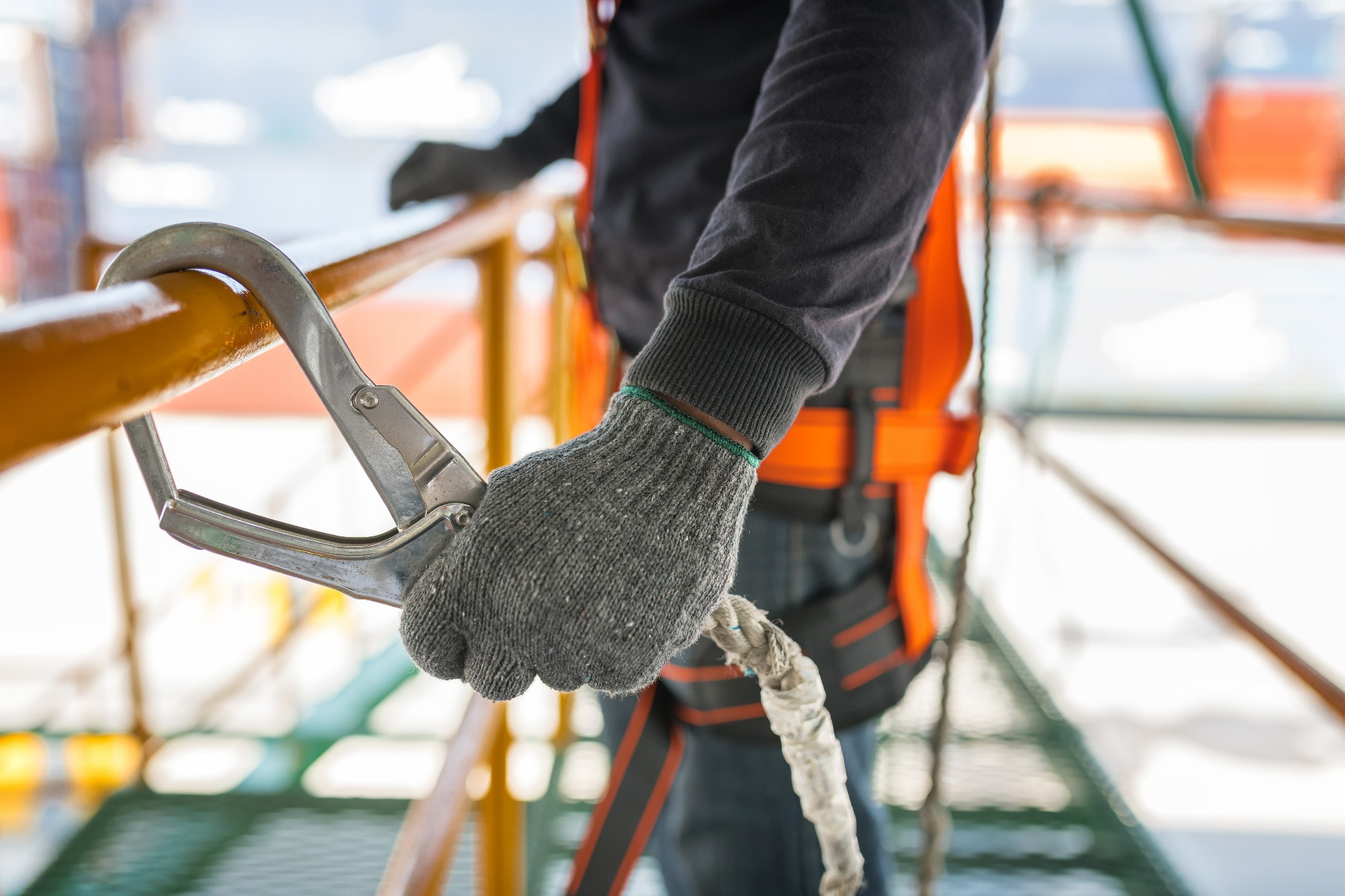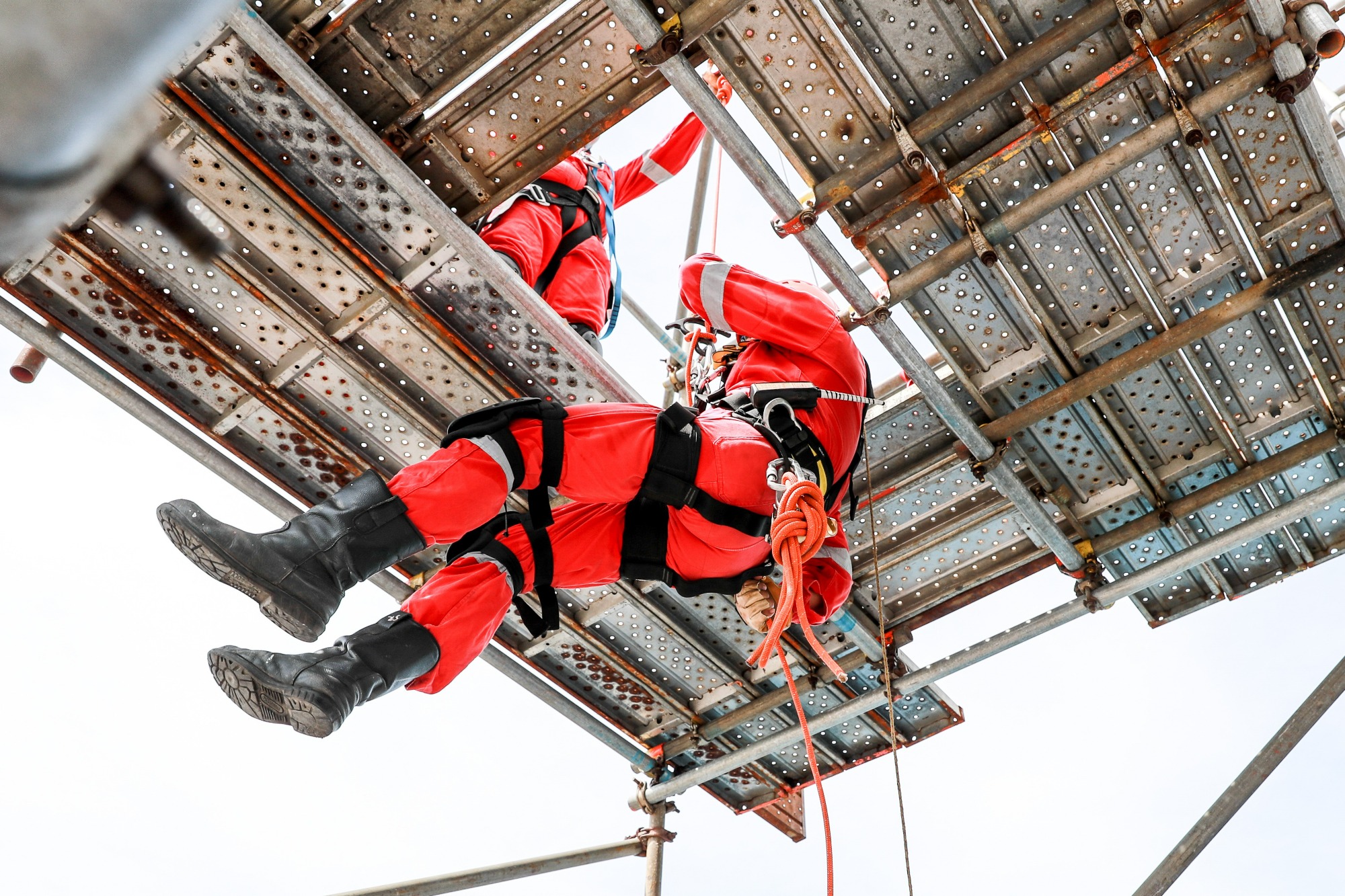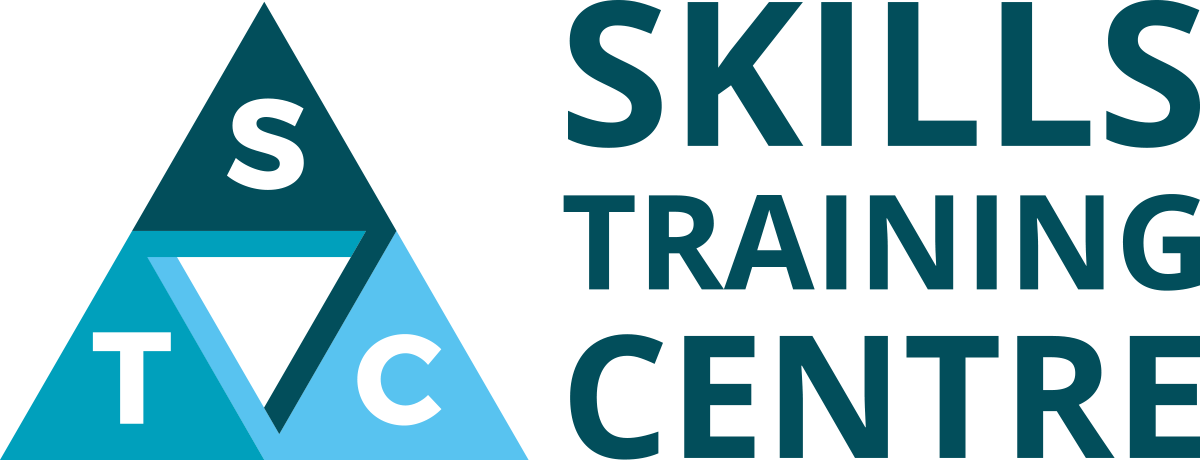Top 10 Safety Tips for Working at Heights
Work at height means work in any place where, if precautions were not taken, a person could fall a distance liable to cause personal injury.
Falls from height remain the single biggest cause of workplace deaths and one of the main causes of major and life-changing injuries. Whether you work at height every day for your job or only on occasion when doing DIY, working safely should always remain a top priority.
In this article we will discuss what working at heights entails, what are the regulations, discuss the top 10 safety tips and the training courses Skills Training Centre can provide.
What is working at height?
You are working at height if you:
-
work above the ground or floor level.
-
could potentially fall from an edge, through an opening or fragile surface.
-
could fall from ground level into an opening in a floor or a hole in the ground.
It’s also important to note that working at height does not include a slip or a trip on the level, a fall from height has to involve a fall from one level to a lower level, nor does it include walking up and down a permanent staircase in a building. Work at height doesn't have any specific measurement that classifies it.
According to the HSE Health and Safety at Work Statistic Report 2020; in Britain in 2019/20, 111 workers died as a result of injuries sustained from an accident in the workplace. Of those 111 fatalities, 29 were as a result of a fall from height, which is approximately over 2 fatalities per month, the biggest cause of workplace deaths in the UK.
Furthermore, in 2019/20, 693,000 people sustained a non-fatal injury at work and out of the 693,000 injuries, 55,440 (8%) are known to be falls from height. That works out at approximately 151 injuries every day.
What are the working at height regulations?
The purpose of The Work at Height Regulations 2005 is to prevent fatal and non-fatal injuries caused by a fall from height. The regulations apply to all employers / contractors who are involved in employing others to work at height.
As part of the Regulations, employers must ensure:
-
all work at height is properly planned and organised.
-
those involved in work at height are competent.
-
the risks from work at height are assessed, and appropriate work equipment is selected and used.
-
the risks of working on or near fragile surfaces are properly managed.
-
the equipment used for work at height is properly inspected and maintained.
According to the HSE website; employees have general legal duties to take reasonable care of themselves and others who may be affected by their actions, and to co-operate with their employer to enable their health and safety duties and requirements to be complied with.

10 safety tips for working at heights
Sadly, it only takes one small mistake to turn a routine task into a serious injury or fatality. Although the onus is usually on the employer to ensure safety procedures are followed and in place, it's important to note that all employees should be aware of the risks and ways to prevent them to ensure a safe execution every time.
1. Adequate Training
Ensuring that all employees are fully trained is inarguably the first step towards risk mitigation. Under Regulations 5 and 6(5)(b) of The Work at Height Regulations 2005 you must ensure that everyone involved in the work is competent (or, if being trained, is supervised by a competent person). This includes involvement in organisation, planning, supervision, and the supply and maintenance of equipment.
Where other precautions do not entirely eliminate the risk of a fall occurring, you must (as far as it is reasonably practicable to do so) train those who will be working at height how to avoid falling, and how to avoid or minimise injury to themselves should they fall.
2. Risk Assessment
An employer must consider The Work at Height Regulations 2005 and The Health and Safety at Work etc Act 1974 that both require that employees are suitably trained for the work they are tasked to carry out, it is a legal duty to carry out a risk assessment to discuss the risks and ensure the preventative measures are in place. If the company has more than 5 employees this risk assessment must be recorded and available for inspection.
3. Working at Heights PPE
Use the correct Personal Fall Arrest Systems (PFAS) for example harnesses and lanyards. Ensure research is carried out to determine the most appropriate and suitable equipment is available.
4. Inspect your PPE
Now you have the appropriate PPE in place it's essential that this is checked before every use, this step could be the difference between life and death. It’s important that all workers are aware of what they should be checking, what defaults they are looking for and what steps should be taken if a problem should arise.
5. Working at Heights Equipment
Whether this is a scaffold structure, lift or a ladder, it's important to remember that equipment isn't a one-size-fits all. The project or task should be assessed prior to starting work to determine what elevation system is required.
6. Ladder Safety
The law says that ladders can be used for work at height when a risk assessment has shown that using equipment offering a higher level of fall protection is not justified because of the low risk and short duration of use; or there are existing workplace features which cannot be altered.
Using a ladder for only a short duration should not be a deciding factor when establishing if its use is appropriate - the risks and tasks need to be assessed first and foremost. When using a ladder, you must ensure that it is level and stable and it's located in a practical environment.
7. Lift Safety
Always ensure you are correctly “tied off” when operating a lift, attached to the engineered anchor point and that your lanyard is the correct length for the height you are operating at.
Scissor lifts operate slightly differently as there is no regulatory requirement to be “tied off”; however, your employer or site manager may still require you to do so for additional safety. It’s key to remember that the gate or chain on a lift is closed and you keep both feet planted firmly in the centre of the platform.
8. Review documentation
Reviews should be conducted on a regular basis to ensure that they are updated and relevant to your current projects. It’s crucial that paperwork is revised if there is any change in personnel or work at height operations, new team members or management or if an accident or injury occurs.
9.Use railing and handrails
Railings are the easiest and most recommended method of protective equipment to keep workers safe. No additional training or equipment is needed to use them whilst completing a project
The Work at Height Regulations 2005 require that, for construction work, handrails have a minimum height of 950 mm, and that any gap between the top rail and any intermediate rail should not exceed 470 mm.
10. Check weather conditions
Those working at height and those responsible for safety on site should always keep a close eye on the weather, especially if thunder, lightning, high winds and icy conditions are forecast. Adverse weather conditions can increase the likelihood of injuries when working at heights so it's crucial that the weather is monitored and if in doubt pause the work to eliminate the additional risks.
What training is required for working at heights?
At Skills Training Centre we offer a range of Working at Height courses for operatives; supervisors; and managers. In our training courses we cover awareness and risk assessments, working in a range of environments and the use of safety equipment.
Our vast offering includes courses such as; Ladders and Stepladders, Mobile Towers, Roof Top Access Safety, Safe Use of Safety Harnesses, and Working at Heights.
We don’t believe in delivering courses that just tick boxes, we provide training that allows our attendees to learn new skills, improve existing skills and retain industry based knowledge.
The Working at Height courses we provide are designed to be relevant and cost effective and are delivered to high standards. Our instructors are professional and experienced in their respective fields and are highly skilled at taking into account the needs of individuals with different skills, abilities and experience.
If you wish to gain further insight into our Working at Heights training courses and what Skills Training Centre can provide for you, please get in touch.


